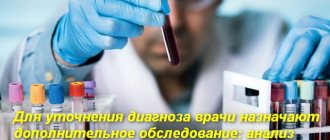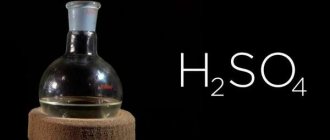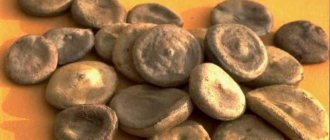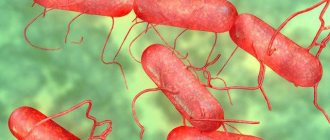For many, cyanide poisoning is strongly associated with historical facts or detective stories. Few people think about the fact that this is possible in real life. However, these cases are still relevant, and anyone can be at risk.
Cyanides are salts of hydrocyanic acid. They are used in different areas:
- when gilding, platinizing and silvering products,
- when nitriding steel,
- for the separation of metals (in chemistry).
Cyanides belong to the group of highly toxic substances. To cause death, only 300 mg of potassium cyanide is enough (which is approximately equal to 1.65 mg/1 kg of human weight).
Causes of poisoning
Cyanide poisoning can occur in two ways: by ingesting its inorganic soluble salts or by inhaling its vapors.
Once in the gastrointestinal tract, cyanide is released in the intestines during digestion and causes poisoning. But sometimes it is not necessary to swallow poisoned food for this. Some plants (almonds or drupes, apricots, peaches, cherries, plums) also release cyanide during the digestion of accidentally ingested seeds. The presence of cyanide in the gastrointestinal tract is indicated by a characteristic symptom - a faint odor of almonds from the mouth.
In everyday life, cyanide poisoning can occur when baiting rodents. Particularly dangerous inorganic cyanides are used for these purposes. There is also a high risk of poisoning during the wet photographic process (while working with fixer).
In addition, the amount of cyanide is always increased in the body of smokers, since the tobacco smoke they inhale contains hydrocyanic acid.
Cyanide ions are always present in the human body, but in very small quantities. Without these substances, a complete metabolic process is impossible. However, exceeding the dose can lead to one of the most dangerous etchings.
Prevention
To prevent cyanide poisoning, chemical workers must carefully follow safety requirements.
It is forbidden to eat large quantities of seeds of certain types of fruits, which contain hydrocyanic acid compounds. It is especially important to explain this rule to children and monitor its implementation.
Education: graduated from the Tashkent State Medical Institute with a degree in general medicine in 1991. Repeatedly took advanced training courses.
Work experience: anesthesiologist-resuscitator at a city maternity complex, resuscitator at the hemodialysis department.
How does poisoning occur?
Once in the body, cyanide immediately reacts with cytochrome oxidases - cellular enzymes. As a result of this reaction, the transport of oxygen to the tissues stops, metabolism slows down and stops. The brain stops regulating vital systems. A situation arises in the body when oxygen is supplied, but cannot be transported to organs and tissues. Eventually:
- the nervous system is affected,
- the respiratory center is depressed
- death occurs due to respiratory arrest.
If the dose of cyanide is large enough, all of the above happens very quickly, sometimes in a matter of minutes. It is almost impossible to help the poisoned person in such cases due to the lack of time to wait for doctors to arrive.
Slow Dying
A dose of cyanide, approximately one-tenth to two-tenths of a gram, entering the victim’s body will also lead to death, but the agony will last from a quarter of an hour to about forty minutes. During this time, five minutes after taking the poison, nausea and vomiting will appear, and weakness will increase. After about twenty minutes, loss of consciousness will occur and after some time, breathing will begin to falter until it stops completely. If the deceased’s oral cavity is examined, it will be noted that his tongue is severely bitten.
Clinical picture
The severity of symptoms of cyanide poisoning depends on the amount of poison that enters the body. In this regard, doctors distinguish 4 degrees of severity of intoxication.
Prodromal
This is the mildest stage, occurring mainly after minor inhalation of cyanide vapor. The poisoned person coughs slightly, feels a sore throat, bitterness or a metallic taste in the mouth, and numbness of the mucous membranes. Nausea, bloating and a feeling of fullness in the abdomen, drooling, increased heart rate and increased blood pressure may appear. In this case, it is usually enough to take the victim out of the room where he could inhale and into the air.
Medical help is usually not needed here. But if a person continues to breathe poisoned air, the second stage of toxic cyanide poisoning will occur. Moreover, the symptoms of poisoning are more similar to a common malaise, which may prevent timely recognition of the true cause of poor health.
Dyspnoetic
At this stage, the nervous system begins to suffer. The person does not understand what is happening, feels anxious or falls into apathy. The gait becomes unsteady, dizziness, movements are uncoordinated, and the victim becomes drowsy. The mucous membranes and skin turn red, the pupils dilate, tremor of the arms and legs, rapid heartbeat, shortness of breath, cold sweat with chills appear. The main distinguishing sign of this stage of intoxication is bulging eyeballs, a state of panic (a person tries to run somewhere, commit inexplicable acts, which can be dangerous both for him and for others).
Convulsive
At this stage, urgent administration of an antidote to cyanide is required, since the rate of poisoning is rapidly increasing. Tremor turns into convulsions, muscle and tendon reflexes decrease (there is a risk of biting the tongue). The person feels nauseous and vomits, diarrhea appears, the pulse becomes thread-like, blood pressure drops sharply from high, the temperature rises, and the patient has a fever. Sometimes defecation and urination occur involuntarily (urine is dark and has an unpleasant odor).
Paralytic
This is the last, and therefore the most dangerous stage. If urgent resuscitation and detoxification measures are not taken, the person poisoned by cyanide will die. With this degree of poisoning, a person loses tactile sensitivity, breathing becomes weakened and shallow, and the pupils do not react to light. The cramps end. A symptom characteristic of this stage appears - an excessively bright blush that does not disappear even after the death of the poisoned person.
Usually only a few minutes are enough for death to occur as a result of pulmonary edema and cardiac arrest after oxygen deprivation.
Manifestation of chronic poisoning
The chronic form develops as a result of frequent or constant exposure to a toxic substance on the body. People associated with cyanide on duty are susceptible to this.
In chronic cyanide poisoning, both general and specific symptoms can be observed.
General signs of poisoning:
- my head hurts and I'm dizzy,
- manifestations of dyspepsia develop (disorders of the stomach, accompanied by painful and difficult digestion),
- the person sleeps poorly or little,
- memory deteriorates,
- there is pain in the heart area,
- sweating increases,
- problems with the genitourinary system begin,
- body weight decreases.
In chronic poisoning, each system of the body, reacting to the poison in its own way, produces specific symptoms of cyanide poisoning.
The nervous system suffers the most: intoxication psychoses of varying severity and neurasthenic syndromes develop.
From the gastrointestinal tract, dyspepsia and liver dysfunction appear.
The skin's reaction to cyanide poisoning manifests itself in the form of constant itching, peeling, development of eczema on the hands, and after direct exposure to hydrocyanic acid, deep and long-healing ulcers appear on the skin.
The cardiovascular and respiratory systems will respond to poisoning with hypotension, an increase in heart size and pulmonary emphysema.
The thyroid gland is often affected by cyanide. This can be understood by an enlarged goiter, a swollen face of the victim, in whose body metabolic processes slow down.
Mild to moderate severity
One to three hundredths of a gram of a substance entering the body does not immediately negatively affect health. Only after half an hour a person may notice a sore throat and a desire to clear his throat. A metallic taste on the tongue will be further evidence of potassium cyanide poisoning. There may be numbness in the mouth and at the same time copious amounts of saliva. Breathing will begin to quicken, and the urge to diarrhea will appear. If in the future the symptoms disappear, the victim will return to normal without the help of doctors. In this situation, only their control examination will be required. But if the poisoned person’s body is weakened by any diseases or is susceptible to poison, then after the above symptoms, a serious arrhythmia may occur and the pressure will rise sharply. The person will feel a panicky fear of death and complain of lack of air. The patient will need medical attention and even the administration of an antidote.
In household products, the dose of cyanide is usually contained in a minimal amount that cannot cause serious harm to health. But in any other cases, poisoning with potassium cyanide will lead to the least consequences if a person tries to neutralize the poison on his own as quickly as possible, because there is sugar in every home.
“>
First aid
How to help a victim of cyanide poisoning depends on the route through which the poison entered the body. But, most importantly, all actions must be coordinated and quick, because only this will give the victim a chance to live. Therefore, the first step in providing assistance will be to call an ambulance. Next - act according to the situation.
If a person is poisoned by cyanide vapor:
- bring the poisoned person out into the air,
- remove the victim’s clothing after cutting it (since cyanide-soaked clothing cannot be removed over the head),
- Wash exposed areas of the body with soap,
- if the person has contact lenses, remove them and rinse the eyes.
If cyanide is swallowed:
- immediately rinse the stomach with a 2% soda solution or a 0.1% solution of potassium permanganate (this should cause vomiting),
- if vomiting does not appear, give special means to provoke it (if they are absent, a warm, sweet drink will do),
- add laxatives,
- if breathing stops, perform an indirect cardiac massage (“resuscitation” mouth to mouth is prohibited, because as a result of this, the person providing assistance will also be poisoned).
Whether the victim will survive or not depends on many factors: how large the dose received was, at what stage the intoxication was determined, whether first aid was provided correctly and how soon the doctors will arrive. If a team of doctors arrives quickly, the person poisoned by cyanide will be immediately hospitalized and treated with the mandatory inclusion of antidotes.
Antidotes
Antidotes that are vital for cyanide poisoning are divided into classes:
- Sugars, glucose. They irreversibly bind cyanide compounds into harmless cyanohydrins.
- Sodium thiosulfate, which converts cyanides into safe thiocyanates.
- Methylene blue, amyl nitrite, inorganic and organic nitrites, Nitroglycerin. These substances convert hemoglobin into methemoglobin, which is unable to transport oxygen. By binding to cyanide, nitrites form cyanmethemoglobin, which is excreted from the body. These are the most effective antidotes, but if their dose is allowed to be exceeded, oxygen transfer will stop even more. However, there is no need to worry; this is hardly possible with the qualified approach of experienced doctors.
It is unlikely that you will have all the necessary antidotes to cyanide at home. From strength - Nitroglycerin and sugar. But often one antidote is not enough, and in the hospital the patient is given different types.
What is chloramine used for?
With chloramine, preventive, current and final disinfection is carried out. This procedure is subject to:
- surfaces of transport objects;
- sanitary equipment;
- underwear;
- tableware (regardless of the material of manufacture);
- glassware;
- patient care items;
- cleaning equipment and materials, toys for children's institutions.
It is used for general cleaning in children's and medical institutions.
Hand disinfection and eye washing are carried out with a solution containing 0.25 - 0.5% of the substance. It is also suitable for douching. Infected skin lesions are treated with a solution containing 1.5–2% chloramine; non-metallic medical instruments are disinfected with an aqueous solution containing 2–5% of the product. It is used to disinfect care items for patients with infectious diseases: influenza, diphtheria, tuberculosis, intestinal infections, scarlet fever.
Chloramine is produced for the textile industry for the purpose of bleaching processes. In analytical chemistry it is used as a reagent.
Treatment
If doctors are not called immediately, all treatment may be unsuccessful. If the team arrived quickly and home care was provided correctly, there is a chance that the patient will recover after emergency treatment:
- administration of nitrites for the formation of methemoglobin (first - amyl nitrite by inhalation at an upper blood pressure of at least 80),
- 10 ml of nitrite solution 3% intravenously,
- within 10 minutes after this - another 50 ml of sodium thiosulfate solution 25%,
- if necessary, norepinephrine to maintain blood pressure,
- oxygen inhalations,
- if necessary, artificial respiration,
- if necessary, repeat the administration of sodium thiosulfate and sodium nitrite.
That is, all measures are aimed at the formation of methemoglobin, but with constant monitoring of its level, which should not exceed 40%. Without methemoglobin, therapy will be useless.
All actions are carried out as quickly as possible, every second is important. After treatment, doctors focus on time: if a poisoned person survives for 4 hours after emergency measures, there is a chance of recovery.
Precautions when working with chloramine
Work with chloramine must be carried out taking into account all precautions that help prevent dangerous intoxication with this toxic substance:
- to store chloramine, use dark containers placed in a cool and dry place;
- to prepare the chloramine solution and package it, use a fume hood or a well-ventilated room;
- a worker performing operations with chloramine must be provided with rubber gloves, a special gown and apron, sealed goggles, a four-layer gauze bandage or a universal respirator;
- Disinfection and cleaning must be carried out precisely and in a specific sequence. Residues of the product are removed as much as possible from the surfaces being treated;
- it is easy to prevent complications from chloramine vapor poisoning through regular medical examination;
- carry out constant monitoring of the level of chlorine in the air using a special device;
- When using chloramine-based cleaning products at home, be sure to ventilate the room. Their use should be minimal.
When using chloramine for both industrial and household purposes, you must be extremely careful and follow all safety rules. Then you can prevent poisoning from the vapors of the substance.
Consequences
Even successful treatment of such poisonings does not guarantee complete recovery. After toxic exposure to cyanide, a person may develop:
- tachycardia,
- heart rate changes,
- long-lasting discomfort in the heart area,
- neuropsychiatric disorders.
All these problems cannot be treated quickly, and sometimes the listed consequences themselves lead to the development of additional complications.
Have you ever had cyanide poisoning?
- Yes it was
- No, it was not
- Now there are symptoms of intoxication
ResultsPoll Options are limited because JavaScript is disabled in your browser.
- No, there was no 98%, 226 votes 226 votes 98% 226 votes - 98% of all votes
- Currently there are symptoms of intoxication 1%, 2 votes 2 votes 1% 2 votes - 1% of all votes
- Yes, there were 1%, 2 votes 2 votes 1% 2 votes - 1% of all votes
Total votes: 230 10/04/2017 You or from your IP have already voted.
- Yes it was
- No, it was not
- Now there are symptoms of intoxication
You or from your IP have already voted. results











